You may be surprised to see what I’ve been composting on a warm April day. Sustainability enthusiasts could have encountered this in their compost bins at home too. I have been optimistically composting milk cartons, believing composting the cardboard to be good. My reason for this was that on a consumer level, it would reduce plastic demand. And I thought, if there was a little break down of the plastic film, would this really be so bad? I could remove the very thin film of plastic that was left without too much of a hazard to the environment anyway, right? Maybe not.
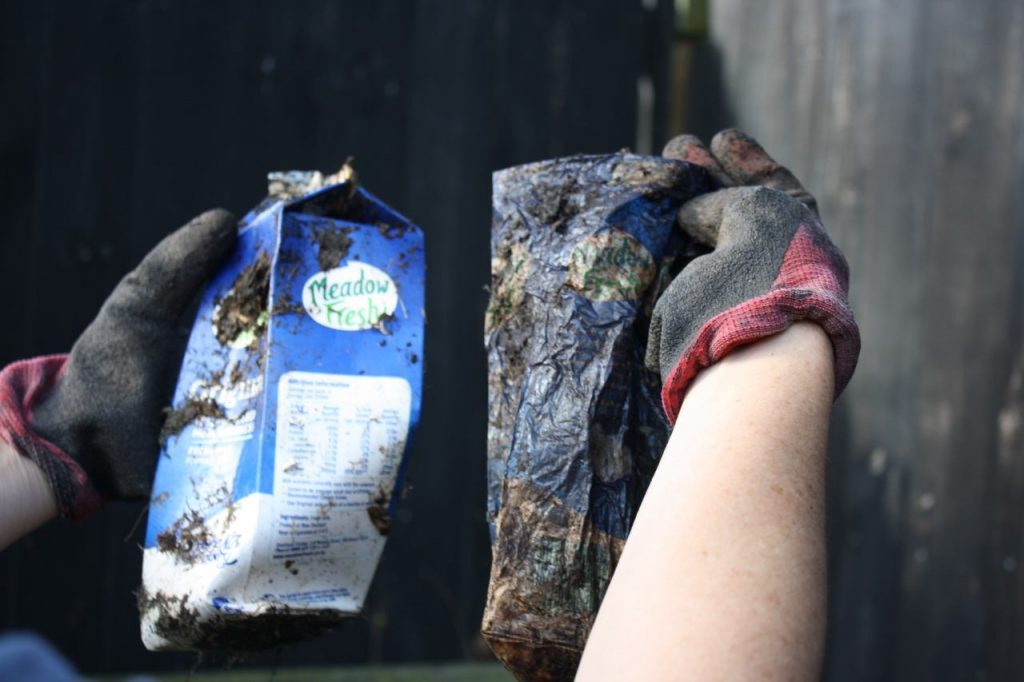
How bad is plastic coated cardboard?
It turns out that composting plastic coated cartons is not as harmless as it may seem. This is because plastic becomes brittle and fragments in compost [1]. This is not biodegradation. Biodegradable items will break down by microbial action, and allow the building blocks that result to be used in nature. When plastic in a compost pile or in the environment breaks down, the result is just smaller particles of plastic. These accumulate to the detriment of organisms and natural processes. They loiter in ocean pockets as we know, from research such as the ‘Great Pacific Garbage Patch’. And indications are that soil environments are being impacted too. For those that would like to read more about this, scroll down a bit further.
My personal horror
My immediate response to this simple investigation was to recoil in horror! And it made me examine some of my other assumptions.
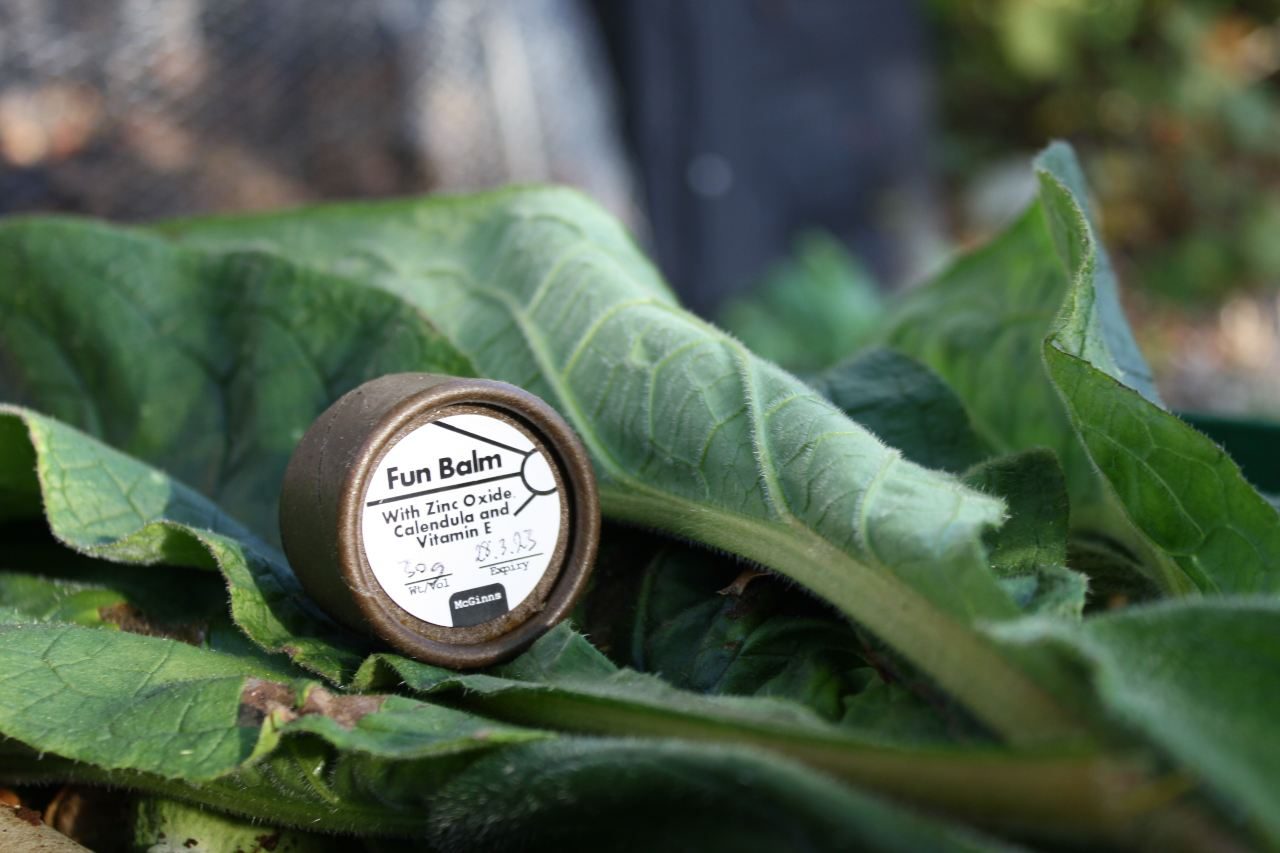
I scrambled to double check my kraft-card packaging for its ability to biodegrade!
Was I accidently contributing to the microplastic problem, not only on a domestic level, but in my business as well?! I held my breath while I checked on my balm tube specifications. Here’s what my supplier said:
“These kraft paper push-up 100% recyclable lip balm tubes are a great eco friendly alternative to tubes made from petroleum based plastics. Kraft paperboard is renewable, biodegradable, and recyclable. These tubes are constructed with an oil resistant paper barrier perfect for balms and lotions.”
Phew, what a relief! A founding philosophy of Mcginns Madefresh is to consider what is harmful and make better ingredient and packaging choices. To conserve resources, and to be as natural as practically possible, while producing safe plant based skincare.
Don’t be discouraged.
So I mucked up with the milk cartons here, but I’m considering this to be a stepping stone to better environmental awareness. There is a satisfaction that comes with utilising garden and household waste. So I’d like to pass some info on, and why not give it a go yourself?
Compost Ingredients.
Household compost is made up of kitchen and garden waste, and a bit of manure. To make good compost it must be made from mostly Carbon. Carbon comes from things like leaves, sticks, paper and cardboard (not plastic coated!). The other main ingredient is Nitrogen which comes from leafy garden matter, lawn clippings and kitchen waste. Carbon and Nitrogen are necessary to feed soil microbes. They release carbon dioxide through their metabolism, and provide a moist, solid, broken down ‘humus’ for plants to grow in. It also contains Phosphorus, Potassium and other trace elements which are essential for your plants to grow to a healthy size, and for a good crop.
Dave the Grounds Keeper’s Compost Recipe.
My colleague Dave gave me very good composting advice a few years ago. He said to work in buckets. For every 80 buckets, of whatever size:
- 55 must be ‘brown carbon’.
- 35 must be ‘green nitrogen’.
- Add a bucket of horse poo,
- Wet continuously with a slow sprinkler flow as you are layering all this up.
A tip he gave me was to make the pile temporary and movable. Because you have to turn it anyway, he would disassemble his pile to turn it every time. He chose a wire surround and stakes to make a pen for the compost. The reason for this is that it let’s air in, which is better for this quick, aerobic style of composting. When it came time to turn his compost, he would take the surround wire off the old pile. Set it up again close by, and turn the outside material of the old pile to the inside of the new one. By doing this it gave the outside edges a dose of hot compost centre temperatures. He advised if your pile doesn’t generate heat, mix it again with another bucket of manure. Wet it as you go again if it feels dry. See the picture I took while talking to Dave, below. Look how neat it is! His old pile is in the background, and he was just about to turn it.
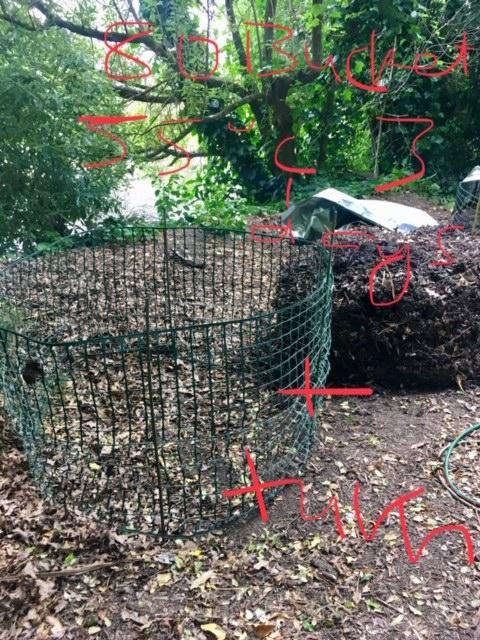
See the notes in red I made on the photo of Dave’s compost pile at the time so I didn’t forget what he said!
“For every 80 buckets total 55 should be Carbon material, and 35 Nitrogen material, three of horse poo. Layer it and wet it well, then turn every three days at least three times.” Said Dave ‘The Grounds Keeper’
Leave the pile at least three days.
Cover it so it doesn’t gain or loose too much water, and leave it! Good compost should get warm, and you can turn it as soon as every three days for a good hot mix. This is an aerobic style system, not an anaerobic one that you leave over winter. Temperatures of 60 degrees Celsius for 45 days kill hardy weed seeds, and 55 degrees Celsius for three days kills pathogens. I turn my pile sooner than 45 days, so I put weeds in my curbside green bin collection to eliminate the seeds.
Lasagna Gardening.
You may be wondering what to do with compost, now that you have made some? The answer is a lot! If you apply it to the top of your gardens, you will transfer the good microbes cultivated by your compost. This inoculates the soil with good microbes and improves it as it is, where it is. No need for digging in. You can even do this by making a ‘tea’ with a compost in your watering can, to make your microbes go further. Another use is for establishing new plantings. Every time I shift or plant something new, I replace some soil with compost and water the plant well. I soak cardboard and put it over the top, and then put pea straw on top of that. The card keeps weeds away from the plant, and helps lessen the need to weed from regrowth around the planting. This method of bed preparation, sometimes called lasagna gardening, also reduces loss of water by evaporation, and protects the plant from light frosts.
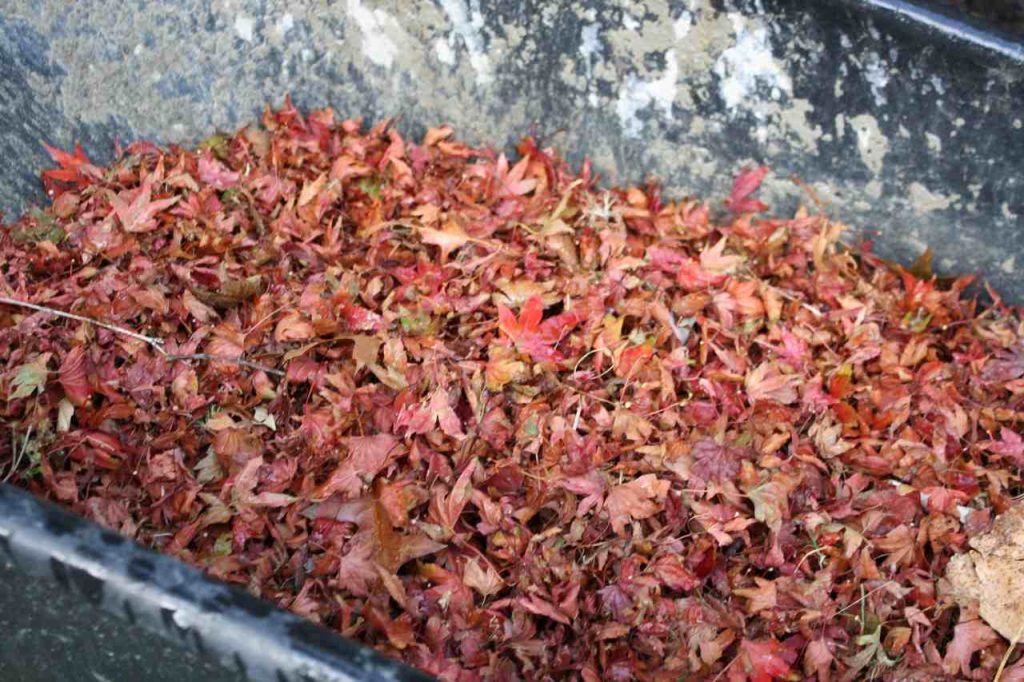
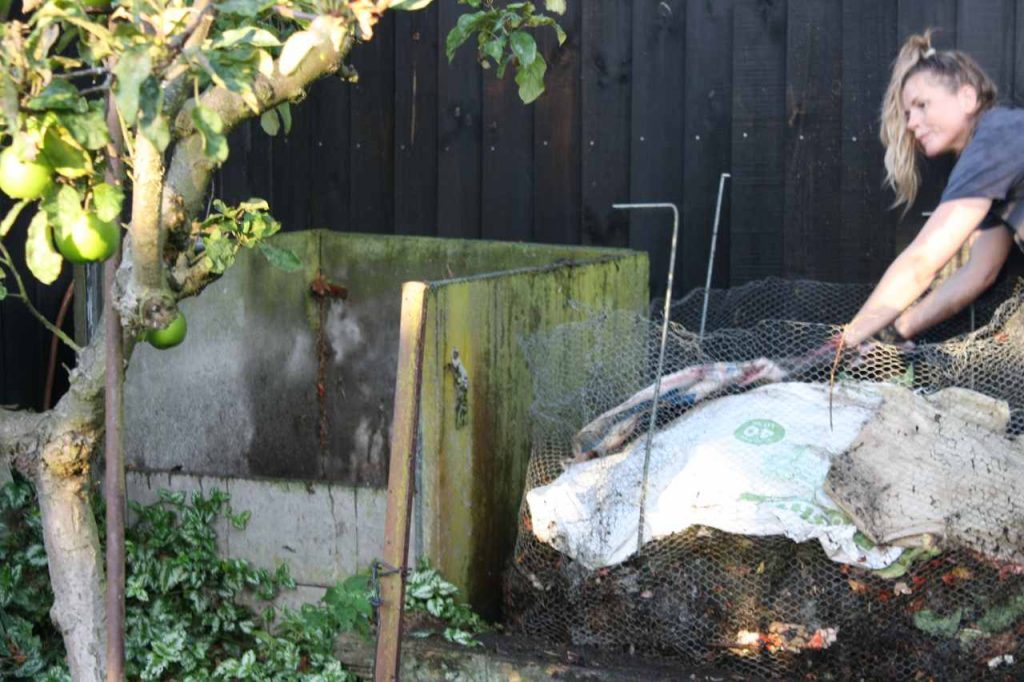
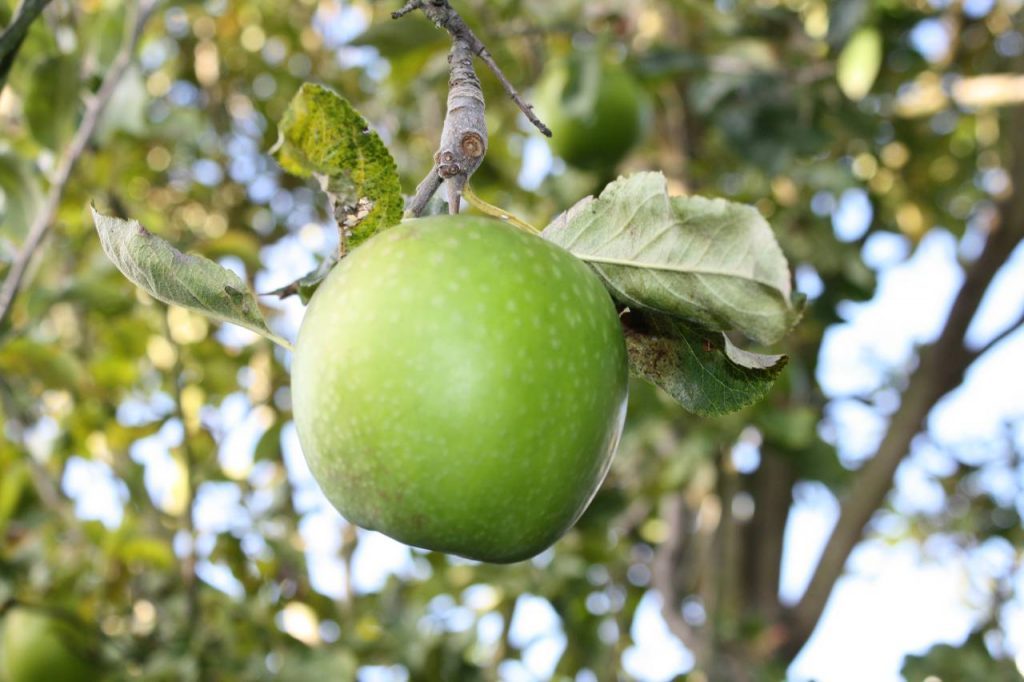
Thanks for reading this far! Read the sections below for more about microplastics.
Why could microplastics in our compost cause a concern?
A microplastics in compost study. Why was it conducted?
A relevant study conducted in North America is linked at the end, called Microplastics in Compost: The Environmental Hazards Inherent in the Composting of Plastic-Coated Paper Products [1]. It outlines how different kinds of card based packaging break down in compost municipal regimes. In North America a compost collection goal was to divert methane from landfill. This is a good thing to control green house gas emissions. So organic compost collections have been widely encouraged, as it is here in New Zealand. The methane gas from landfill comes from organic matter biodegrading under ground, in oxygen free conditions. Microbes in landfill break down carbon compounds during their metabolism in this environment releasing the Methane. Compare this to the break down of organic matter in a controlled composting facility in the presence of oxygen. This releases Carbon Dioxide gas, which plants use their metabolism.
The study recommendation.
Compost initiatives in the area were encouraging the practice of carton stuffing. Kitchen and garden waste was commonly stored in plastic coated card before putting it in bins for collection. During the study the compost was examined, and plastics were found to fragment, not biodegrade. The study suggested soil was contaminated with microplastic when the compost was used as an end product. That the microplastic will work its way into waterways and oceans by the wind, and flow through surface run off. They pointed out there is currently no viable way to screen or retrieve the plastic back again. And so the recommendation of this study was to contain all plastic coated card in landfill, and not allow it into compost.
The detrimental effects of macroplastics on wildlife
are well documented, particularly in aquatic environments.
Current research indicates that microplastics
may have equally detrimental effects on organisms. It is also
well known that the majority of plastic debris in aquatic
environments is land-based in origin.
Microplastics in Compost: The Environmental Hazards Inherent in the Composting of Plastic-Coated Paper Products [1]
In addition, another article suggests that within soil, before its travelled through waterways to larger bodies of water, microplastics can interfere with the carbon cycle by inhibiting plant growth, and affecting microbial activities in the soil. [2] The types of microbes present in the soil, and also the structure of the soil can be affected.
Its not hard to imagine the flow on effects from these things are felt higher in the food chain. Maybe crops are harder to grow and so more scarce. Maybe invertebrates, vertebrates, and our food stocks become toxic for us to consume, making us sick. We would have fewer sources of food over time.
Microplastics, Macroplastics and Nanoplastics
Microplastics are small fragments of plastic less than 5mm in size [3] Macroplastics are plastic fragments larger than this and the kind that wind up in Turtle stomachs and around animals necks. Are there smaller particles than microplastic? Yes microplastics can break down even smaller and these fragments they are called nanoplastics. These can travel within and between cells, potentially causing toxic effects. [3]
Think global, act local.
Microplastics sound like bad news to me, and awareness now inspires me to do better. I have made a simple decision not to buy plastic covered milk cartons for our household. It can feel hopeless and overwhelming when plastic pollution spans the whole world. We can’t solve the whole plastic problem overnight, and we can’t do it alone. But, every single person choosing to do better will make a large accumulative effect in my opinion. I challenge you to make gradual sustainable changes to the way you live to reduce your use of plastic. Start with just one. Over time it is inevitable that decreased consumer demand for plastic will change supply, and raise awareness for the problem. Its already happening with the rise of refillable product popularity, and with publicity of marine animal deaths from plastic. We just need to keep up the momentum.
Thank you Christchurch City Council for “only accepting plain cardboard” in our green waste <3 Find out more about Christchurch Organics Collection information through this link. Search your local council website for compost collection information near you.
Linked References.
- [1] https://ecocycle.org/files/pdfs/microplastics_in_compost_white_paper.pdf
- [2] https://www.sciencedirect.com/science/article/abs/pii/S0929139322001020
- [3] https://www.sciencedirect.com/journal/applied-soil-ecology/special-issue/106S5B7R0XG


